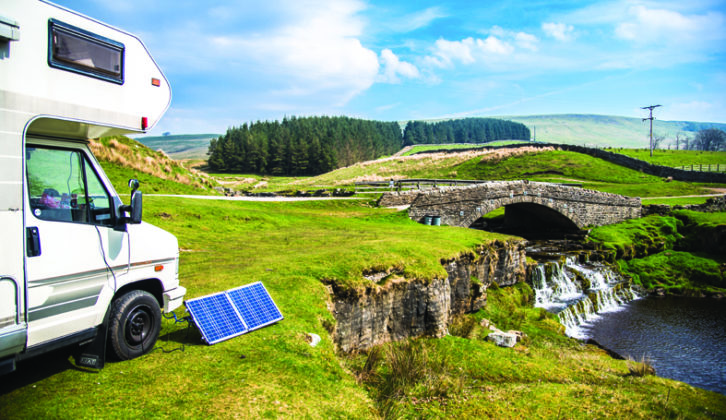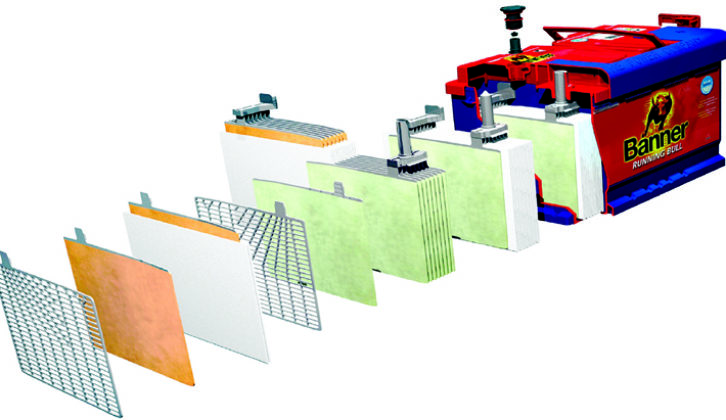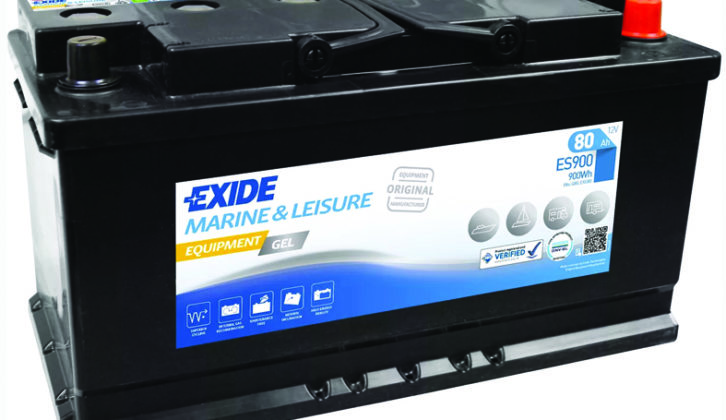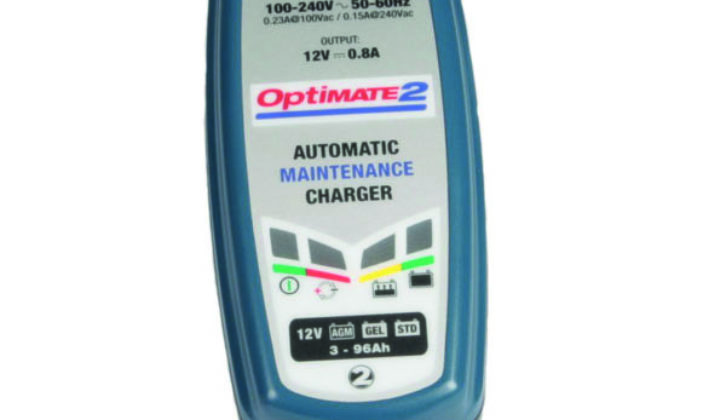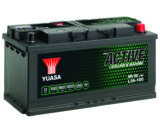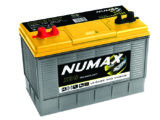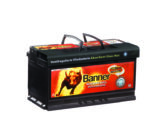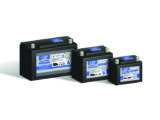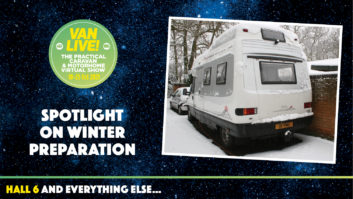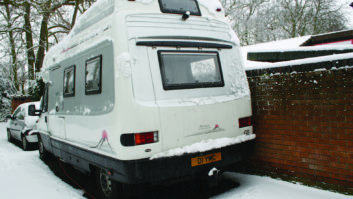It goes without saying, a reliable electricity supply is absolutely vital for keeping you and yours comfortable on tour. The joy of a motorhome or campervan is being able to stay warm and dry, wherever you travel. A ready supply of electricity makes achieving this considerably easier, which is why motorhomes carry their own around, in the form of leisure batteries.
Ensuring you have power when you need it is vital to enjoying your motorhome adventures.
Before we get into the details of battery use, care and types, it is important to emphasise that this is a complicated subject.
We will cover the basics here, but we’ll keep things relatively simple. If you want to become really clued up on battery technology, you’ll almost certainly need to dust off your maths, chemistry and physics textbooks. Happily, though, most motorcaravanners won’t need to go into the subject in quite so much depth!
Batteries in motorhomes

Starting at the beginning, a battery is quite simply a means of storing electricity. All motorhomes will have at least one battery, but typically there are at least two.
The main motorhome ‘starter’ battery does the same thing as in a car. It starts the engine, and powers the lights, wipers and other essential vehicle systems. The power used is replenished as you drive, by the alternator, which generates power from the engine as it runs. For very modest campers and ‘vans, that might be all there is.
A single battery set-up used to power lights, a radio and any other interior systems onsite is not unheard of, particularly in classics or home-build ‘vans. The upside is the simplicity of maintaining such a simple electrical system.
The downside is that it is very easy to flatten the battery by leaving a light on and you will then be on the phone to the RAC in the morning to request a jump start.
That is why motorhomes typically have a second battery. The second ‘leisure’ battery is wired in separately, powering all of the comfort systems in the ‘van when it is parked up. Depending on the configuration, these are typically charged by a combination of a mains battery charger when on a campsite hook-up, a solar panel, or the vehicle engine when you’re on the move.This configuration covers the vast majority of motorhomes you’ll see on the road, so that is what we’ll concentrate on here.
Starter vs leisure batteries
A battery is a battery, right? Well, not really. While there are basic similarities in structure and function, the main difference is that a starter battery needs to provide that big ‘kick’ of power to start an engine, but is immediately replenished by the alternator once the engine is running.
Buying a new starter battery is dead easy. Find the one listed for your ‘van and fit it.
The leisure battery has a far harder job and as a result, there are a few things to consider when working out what you need. Leisure batteries need to give up their stored power smoothly and consistently over a long period.

They often become quite depleted (which they hate) and often only get charged by weedy battery chargers supplied as part of the vehicle’s standard kit. The combination of hard use and bad charging is what kills batteries.
As such, it’s not surprising that ‘van owners find themselves shopping for leisure batteries more often than they might expect.
Choosing the right leisure battery for you
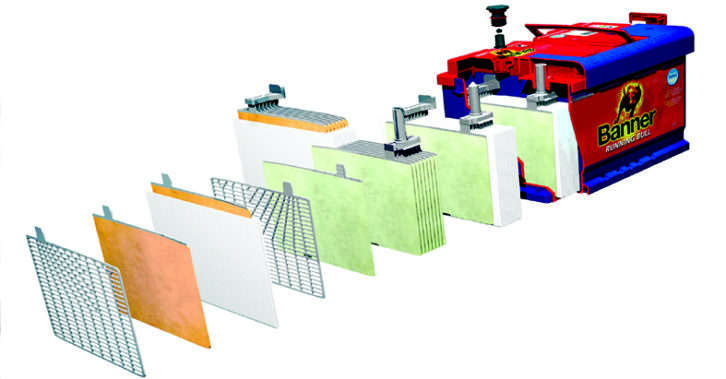
Leisure batteries are replaced when they are dead or if they can’t do what the owners need them to. Buying replacements is easy enough, but buying wisely is more difficult and needs a little more knowledge. Get it wrong and you’ll end up disappointed with the performance, or spending a small fortune on something you don’t need.
Leisure batteries come in lots of different flavours, but one thing they all have in common is that they are measured by the power they provide. Power ratings are given in the form of ampere hours, which is commonly written as ‘Ah’ and spoken as ‘amp hours’.
It is a simple enough equation to work out. Amp hours are a measure of the amount of current that a battery can provide over a period of time. As an example, a 100Ah battery can theoretically deliver one amp for 100 hours. You can chop the numbers up, too. That same 100Ah battery can give five amps for 20 hours.
At least, that’s the theory. But temperature, battery age, charging regimen and the systems in your ‘van mean that nothing is that predictable. The amp hour rating is indicative of battery capacity and the higher the quoted figure, the longer the lights should stay on.
One other thing to bear in mind is that buying at the budget end of the battery market is much harder than buying posher ones. Many of the cheaper leisure batteries are nothing more than starter batteries with a fancy sticker and a marked-up price, and sorting the good from the bad is tough. Even the cheapest tat will do the job initially, but performance will tail off quickly, regardless of how you look after it.
Before you go anywhere near a shop, you need to think about how you use your ‘van. If you typically tour between well-equipped sites, always use a hook-up and keep the vehicle plugged in on your driveway when not in use, you can buy a cheaper battery and you shouldn’t notice any problem at all.
A cheaper wet-lead acid leisure battery will cope with the odd night or two without hook-up, and with prices at less than £100, replacing it every few years doesn’t represent terrible value.
For weekends and short breaks without mains power, you want to be considering spending a little more on a battery that tolerates being more deeply discharged without damage. For this sort of use, a good-quality battery is a must.
Genuine leisure batteries with thicker, heavier internals, designed to cope with leisure use, are essential. Go to a reputable supplier and look for some of the higher-quality brand names, such as Elecsol, Banner and Varta.
If you p[lan to keep the ‘van, pricier gel and absorbed glass mat (AGM) options last longer and need less maintenance than a wet battery, but your supplier will advise on your best solution. If your travel patterns depend on reliable battery power, this is time and money well spent.
For more serious spells away from the sanctuary of the mains hook-up, you’re into the territory of dedicated deep-cycle batteries, specialist charging and complex power management set-ups. Done well, you’ll never need a hook-up, but such set-ups do not come cheap. To avoid expensive mistakes, seek advice from specialists such as RoadPro.
What are the different types of battery?
These days, there’s a wide choice of leisure batteries and prices go up sharply as you get toward batteries that last longer, work better and need less care to carry on performing.
Wet lead acid: the standard battery
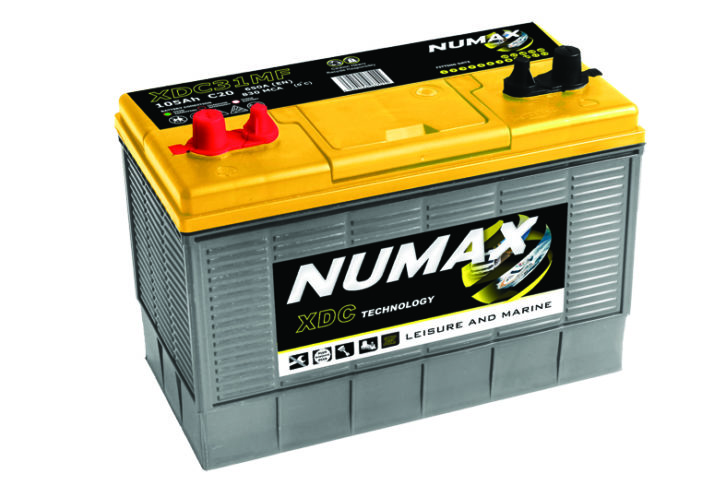
These simple batteries get their name from the lead plates that are submerged in sulphuric acid inside them. The acid acts as the electrolyte, creating an electric charge. They are cheap and easy to get, but need careful handling and maintenance off regular replacement is to be avoided.
- ⊕ This type of battery is cheap, available and effective for the right owner
- ⊗ Shorter life, needs careful storage, needs maintaining, lots of cheap rubbish masquerading as a ‘leisure battery’
AGM

AGM batteries contain glass fibre mats, impregnated with an acid electrolyte and sandwiched in between the lead plates. They are smaller and need less maintenance than cheaper wet batteries, and are more resistant to discharging when not in use, too.
- ⊕ More compact, resistant to tipping
- ⊗ More expensive
Gel

Gel batteries have many of the same qualities as AGM batteries, but are very safe to handle, resistant to discharging when not in use, and maintenance-free. They do need to be charged with care, and they are quite expensive.
- ⊕ Safe, tolerant of deep-cycling
- ⊗ Fussy charging, more expensive option
Lead crystal

Lead crystal batteries are a rare sight, but claim many of the same qualities as gel batteries and tolerate the tough life of a leisure battery pretty well. They are not easy to find and, given the relative expense, offer only small benefits over gel or AGM batteries.
- ⊕ Safer, tolerant of deep-cycling
- ⊗ Rarely found in the UK, premium pricing
Lithium ion (Li-ion)
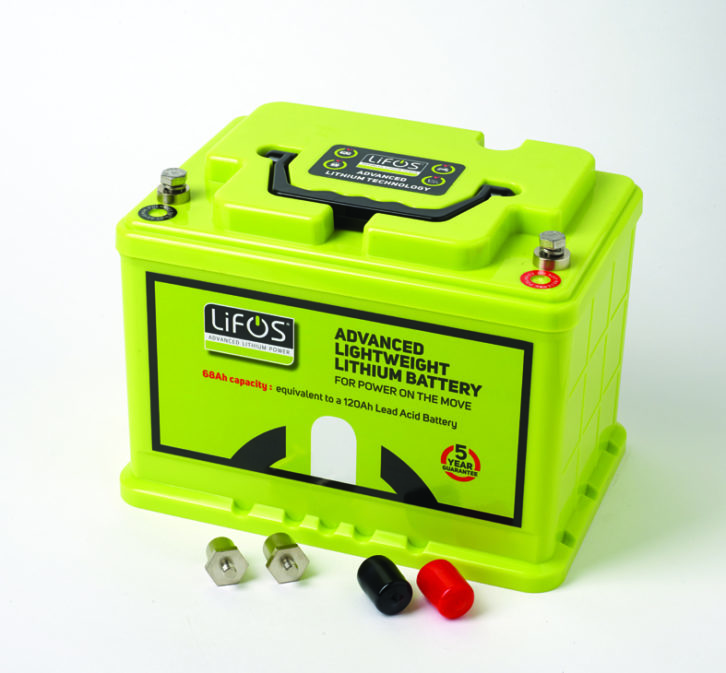
The gold standard for serious use away from the grid. Li-ion battery performance drops off slowly as they discharge, they have a long service life and they are half the weight of lead batteries. They are very expensive to buy, but if you are serious about mobile power, warrant serious consideration.
- ⊕ Lightweight, easy to charge, tolerant of deep cycling
- ⊗ Eye-watering price
Battery care and maintenance
If you have a working battery, it should give years of loyal service, never letting you down when you really want to catch the latest Corrie cliffhanger! Many battery problems are caused by careless owners and can be avoided. Poor battery care leads to the deterioration of the lead plates, reducing capacity and leading in turn to early replacement.
Battery killers
Self-discharge Batteries gradually discharge, even when they are not being used. The rate at which the power dissipates depends on the battery type. Wet-lead acid ones typically discharge fastest, at rates up to 9% per month at 25°C.
Gel and AGM batteries lose 3-4%, although all will cling on to more capacity in cooler temperatures. If they drop too low, damage to the internal components is likely.
Stored when partly discharged A battery that is left connected but unused for long periods will go flat – or self-discharge. A battery left in a low state of charge will quickly lose performance. Keep it charged, particularly when in storage.
Discharged too deeply Batteries do not like being allowed to get too depleted. Letting the voltage drop too low, too often, will cause the battery performance to drop off. Keep an eye on the voltmeter to avoid letting it bottom out.
Low electrolyte level Only applies to wet-lead acid batteries which can be topped up. A low electrolyte level will cause the lead plates to deteriorate. Keep it topped up with distilled water, being particularly vigilant when charging.
Bad charging Good-quality charing is vital to battery health. We’ve got more detail on how to charge batteries peroperly below.
Battery charging
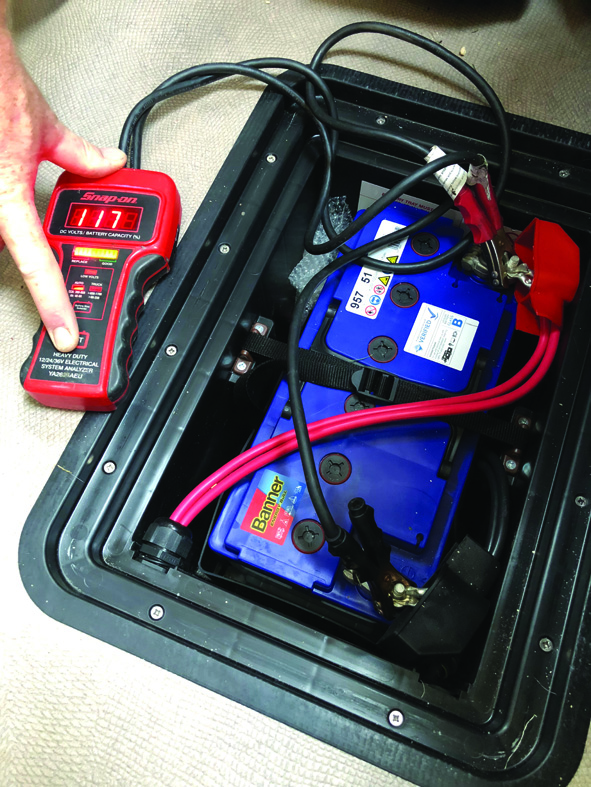
In normal use, your motorhome leisure battery can be charged in several ways:
- Mains charging when you are on a campsite hook-up or on the drive at home, using the standard vehicle mains system.
- When you are riving, using charge from your vehicle’s alternator, via a ‘split-charging’ system.
- If your vehicle has a solar panel, that will charge the leisure battery, although how effectively depends on both the panel and the quality of the charge controller.
These methods should be considered the minimum care your battery gets.
When the vehicle is getting a lot of use, the battery will receive charge, but will never fully replenish relying on these methods.
To keep your battery in optimal condition, you really need better quality charging.
Wet-lead acid batteries need to be charged at a range of voltages, up to 14.4V, in order to top up fully, but at that level, they can ‘gas’, giving off small amounts of hydrogen as they charge.
Many built-in battery chargers in a motorhome typically top out at around 13-6-13.8V, to avoid this happening. That’s a sensible precaution inside the confined space of a motorhome, but hooking the battery up to an intelligent ‘staged’ charger in a well-ventilated area is an excellent way to protect your battery investment.
Intelligent chargers offer a process known as ‘staged charging’, rather than a constant charge at one voltage. Varying the voltage is better for the health of the battery, so these chargers sense the state of the battery and will then charge at the optimum level.
Once the battery reaches 100%, the charger switches to a ‘float’ charge to maintain the battery without overcharging. Some modern motorhomes have intelligent charging systems fitted as standard, which take care of this for you.
If your vehicle does not, removing the battery and periodically charging it with a CTEK or an Optimate is a good idea.
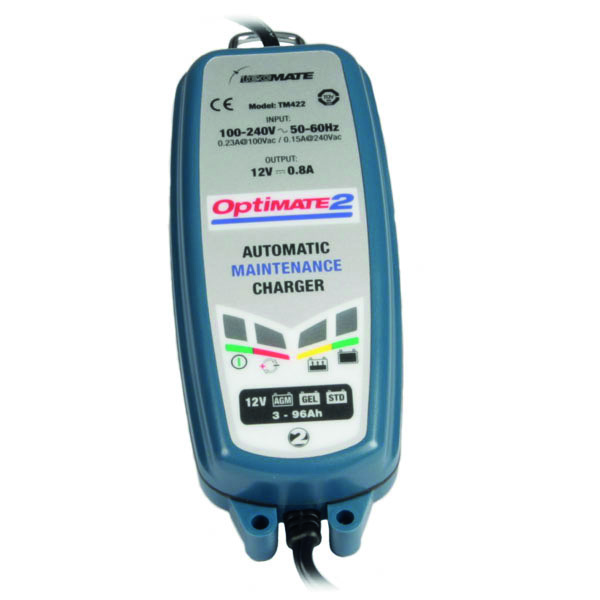
If you like to spend more time on the road than the driveway, but still want to ensure the best of battery health, a dedicated ‘battery-to-battery’ charging system is worth considering.
These specialist charging systems apply this intelligent charging concept, using power from the vehicle battery while driving.
A basic split-charge set-up will trickle-charge your leisure battery, but a battery-to-battery charger will ensure that you are topped up with 12V power when you reach your destination.

These are unnecessary for most motorhome owners, but if you rarely visit a hook-up and want to maintain good leisure battery health, they should be considered as part of a well-planned electrical installation.
Combined with a good solar panel set-up and a well-considered battery provision, you can take a big step toward electrical self-reliance on tour.
NCC battery ratings
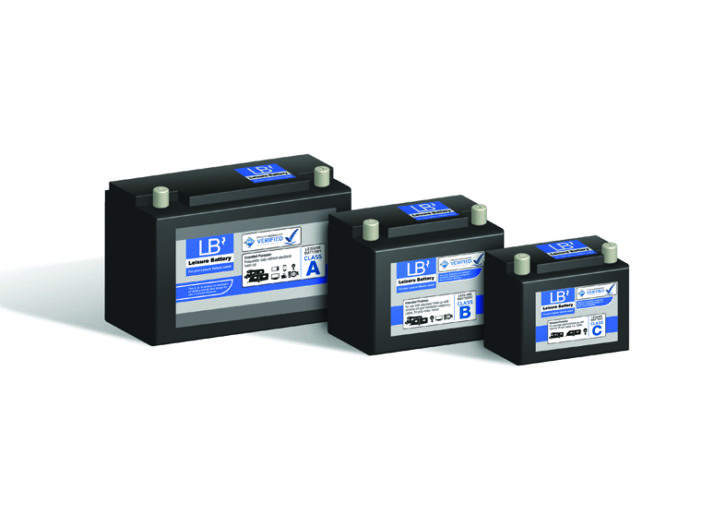
The industry body for the caravan and motorhome industry has a rating system to help owners choose a battery that is suitable for their requirements. Buying a cheaper model isn’t necessarily a problem if your needs are fairly modest. The NCC rating system classifies leisure batteries as A, B, or C.
- A The most highly rated and ideal for those with a lot of electrical devices, and anyone who off-grids.
- B Ideal for those who use electric hook-up, but may also have a levelling system or some other power-hungry device.
- C For those with low electrical current needs, who always use hook-up and have few devices to draw on their battery power.
Not all batteries you see will carry the ratings, depending on where you are shopping, but if present, they are a useful guide to buying something that will keep the lights on long enough for your needs.
What does your voltage mean?
The voltage of a battery when in use indicates its level of charge. This table illustrates the voltage readings you might expect to see at six levels of discharge, from full to empty.
By preventing your charge dropping below 50% for a flooded lead-acid battery, and (ideally) 40% for a gel or AGM battery, you should seriously prolong the life of your leisure battery. In both cases, that equates to around 12.2V on your motorhome’s battery meter.
| Approximate level of charge | Flooded/sealed lead-acid battery voltage | AGM battery voltage | Gel battery voltage |
| 100% | 12.70 or more | 12.80 or more | 12.85 or more |
| 75% | 12.40 | 12.60 | 12.65 |
| 50% | 12.20 | 12.30 | 12.35 |
| 40% | 12.10 | 12.20 | 12.20 |
| 25% | 12.00 | 12.00 | 12.00 |
| 0% | 11.80 | 11.80 | 11.80 |
If you liked this… READ THESE:
If you’ve enjoyed reading this article, why not get the latest news, reviews and features delivered direct to your door or inbox every month. Take advantage of our brilliant Practical Motorhome magazine SUBSCRIBERS’ OFFER and SIGN UP TO OUR NEWSLETTER for regular weekly updates on all things motorhome related.
Future Publishing Limited, the publisher of practicalmotorhome.com, provides the information in this article in good faith and makes no representation as to its completeness or accuracy. Individuals carrying out the instructions do so at their own risk and must exercise their independent judgement in determining the appropriateness of the advice to their circumstances. Individuals should take appropriate safety precautions and be aware of the risk of electrocution when dealing with electrical products. To the fullest extent permitted by law, neither Future nor its employees or agents shall have any liability in connection with the use of this information. You should check that any van warranty will not be affected before proceeding with DIY projects.
The 'leisure' battery is wired in separately, powering all of the comfort systems in the 'van when it is parked up
